What Exactly IS HueForge?
I guess you might want to know
Every since I wrote my first post on this Substack from the Newark Airport on a long layover, I’ve been committed to not spamming people with constant posts, and keeping you updated.
But I just went back and read my old posts and I realize - I never actually explain what precisely HueForge (formerly known as the Color Lithophane Builder) does.
I did send out
Which give you status assuming you already know what the tool does/is for. And you can read between the lines, but it isn’t really clear still.
What is HueForge?
HueForge is a GPU enabled tool I’ve been developing for FDM printed, layer-based color blending. Originally it was an outgrowth of my attempts to print multicolor lithophanes using layered colors.
HueForge has 3 major feature sets
Traditional Backlit Lithophanes - STLs and Color Prediction, but laid flat on the bed.
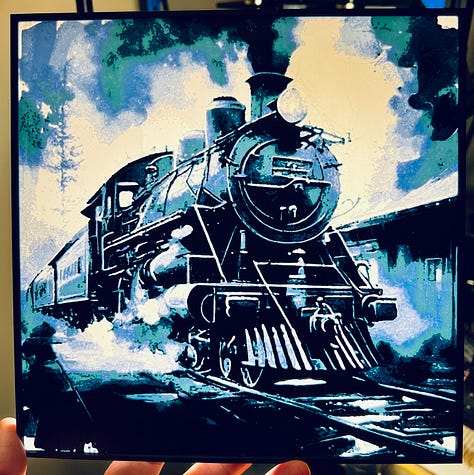
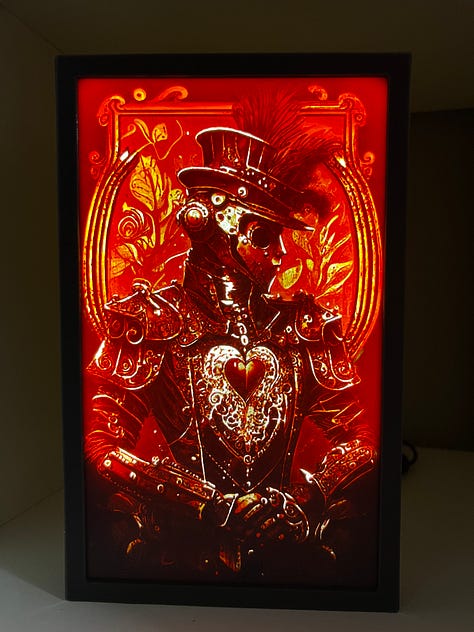
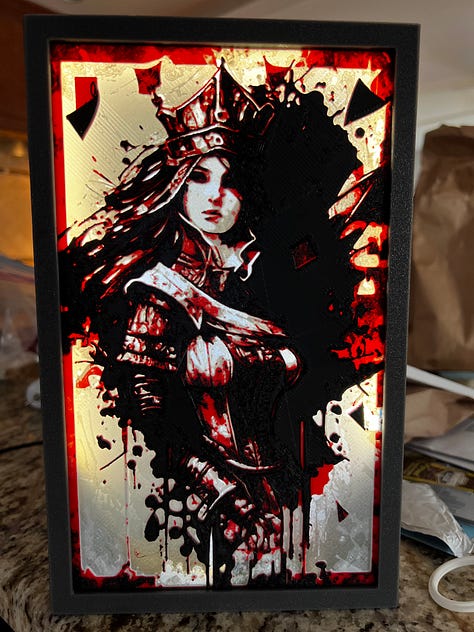
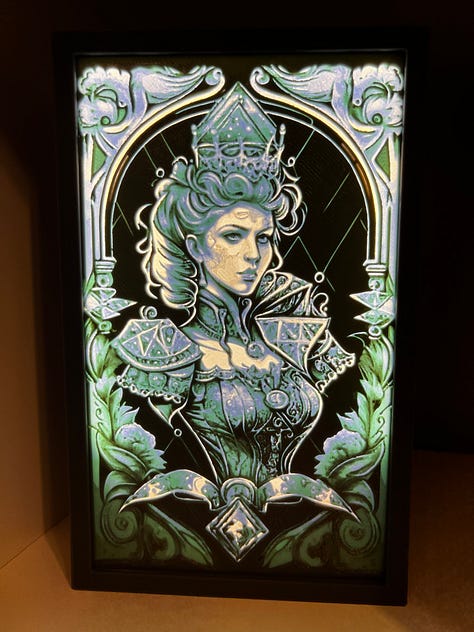
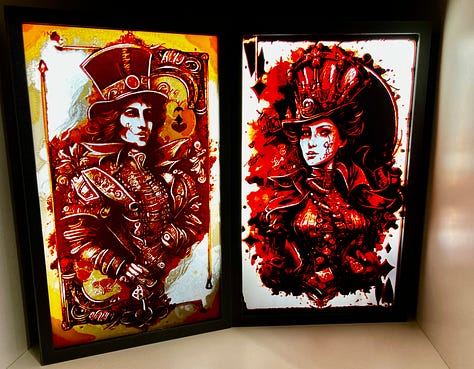
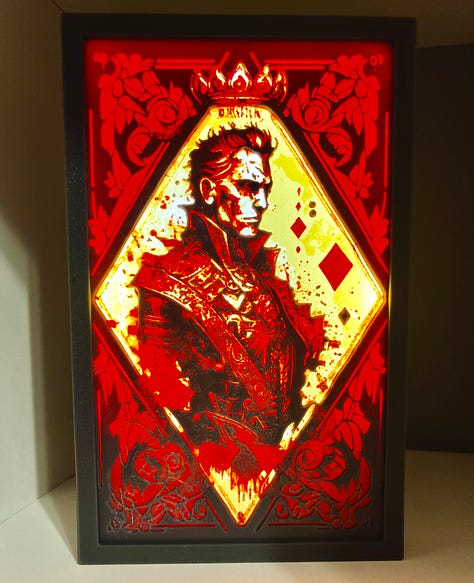
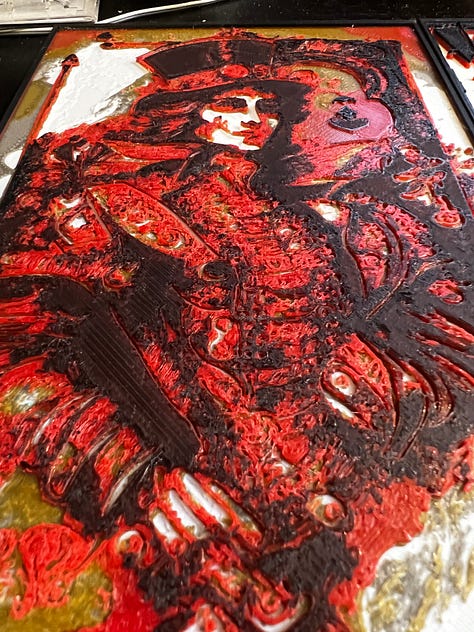
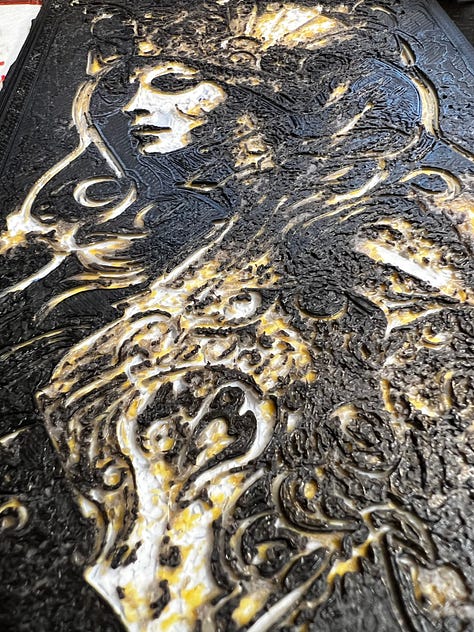
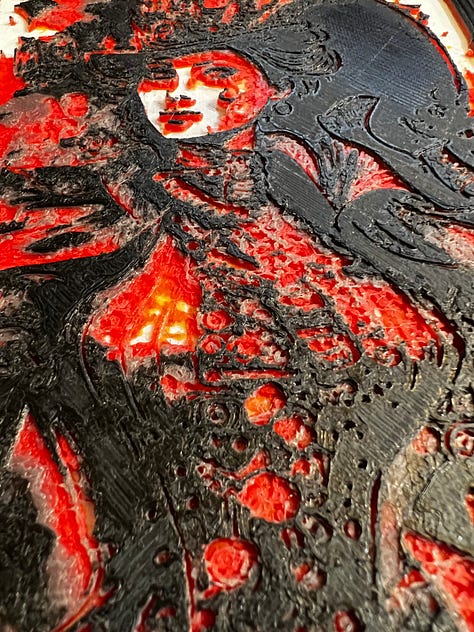
Some examples of Backlit lithophanes printed from HueForgr Front-Lit “reverse” Lithophanes - STLs and Color Prediction, which do not require any light beyond ambient lighting. (How to make a Chessboard)
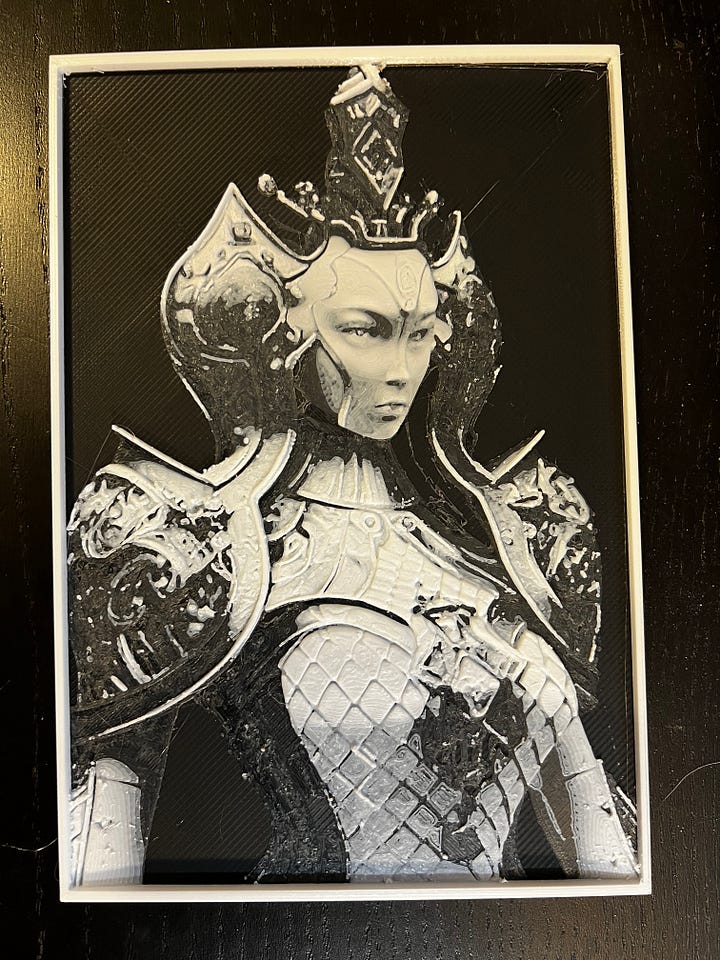
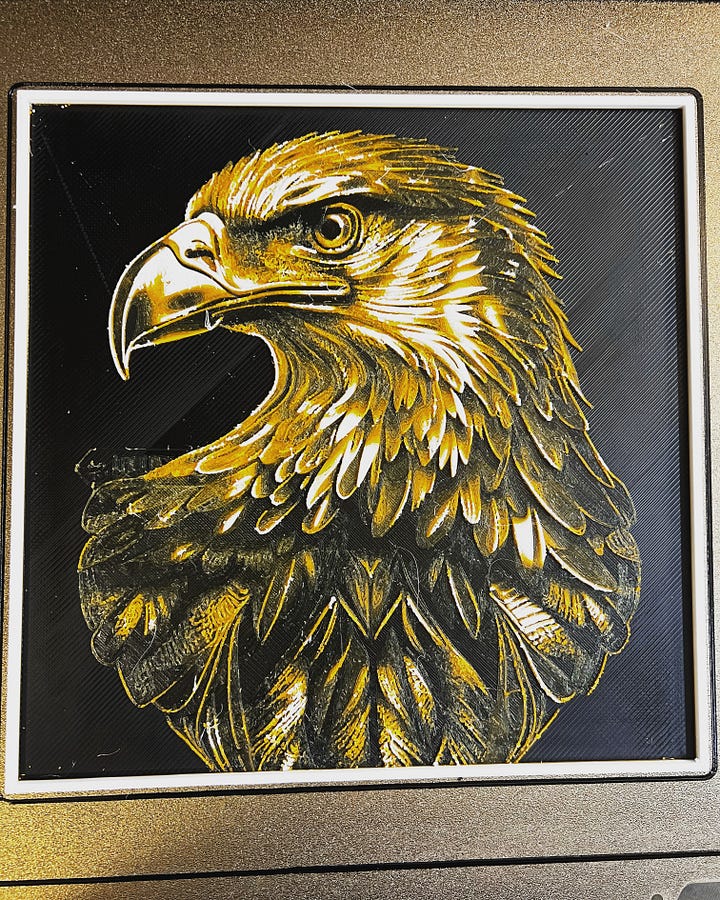
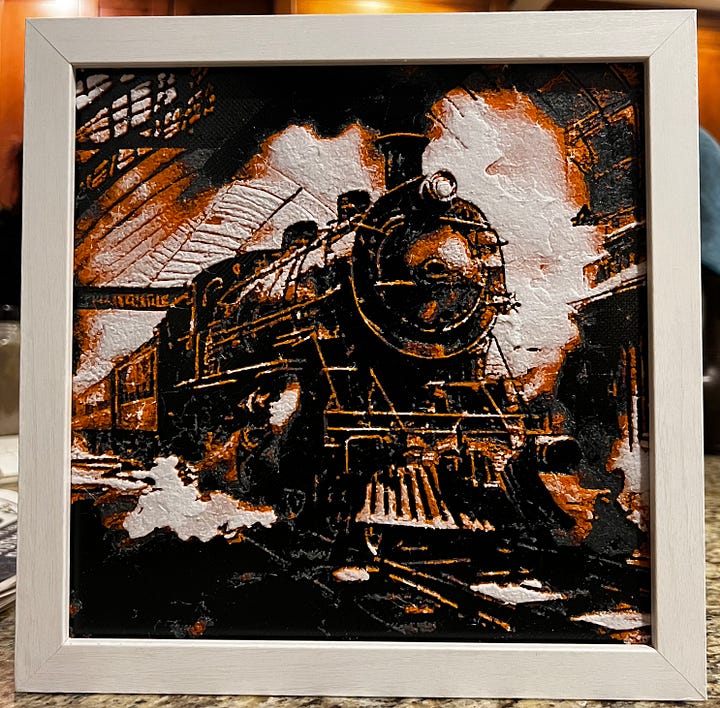
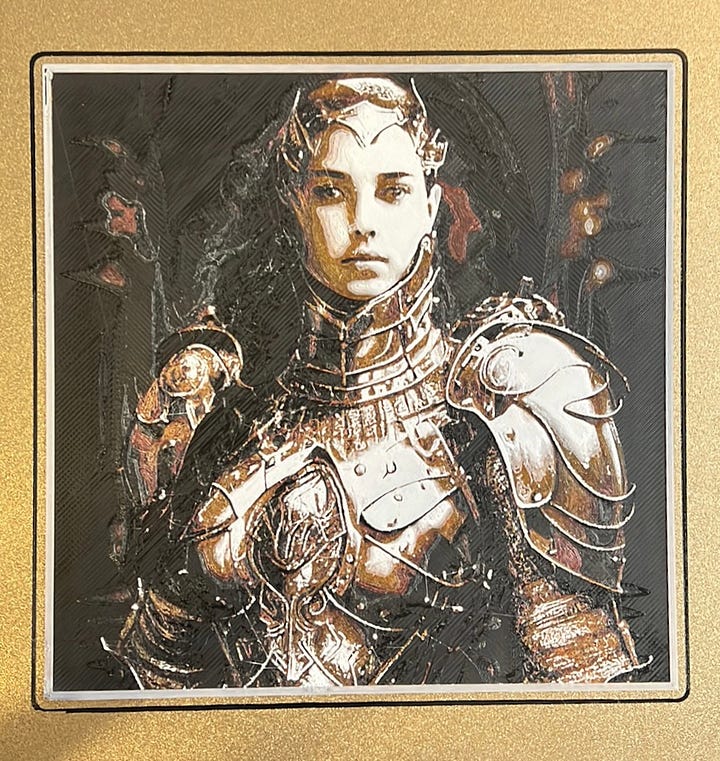
Selected front lit lithophanes Ability to color predict for existing STLs (no image) in either mode, though most commonly in front-lit mode with terrain tiles.
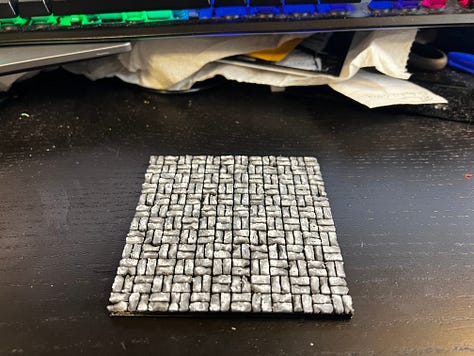
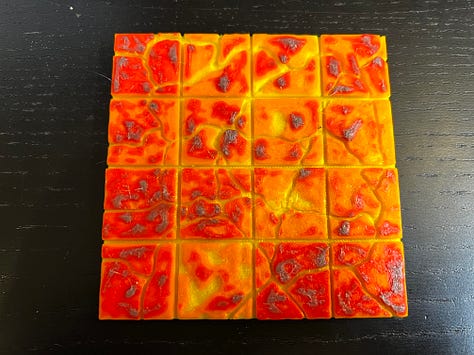
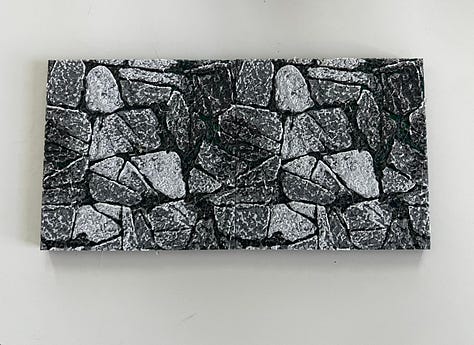
Some dungeon tiles
Beyond that, it has a few advantages over other tools
More STL luminance options allowing non-linear height distributions by luminance value. (This is super low hanging fruit for the other creators)
Color sliders. Rapidly adjust coloring by layer and predict the resulting print. Subject to quality of the filament definitions (color and transmissivity). This does not generate GCODE, it simply generates the layer numbers/mm heights to quickly tell your slicer to add filament changes. (slicer flavored 3mf outputs are on the post release timeline)
“Cut-out” mode, allowing a black border front-lit (or white for back lit) to generate 0 depth files which when sliced are individual pieces. Not currently an integrated feature, plans are to integrate them in the future.
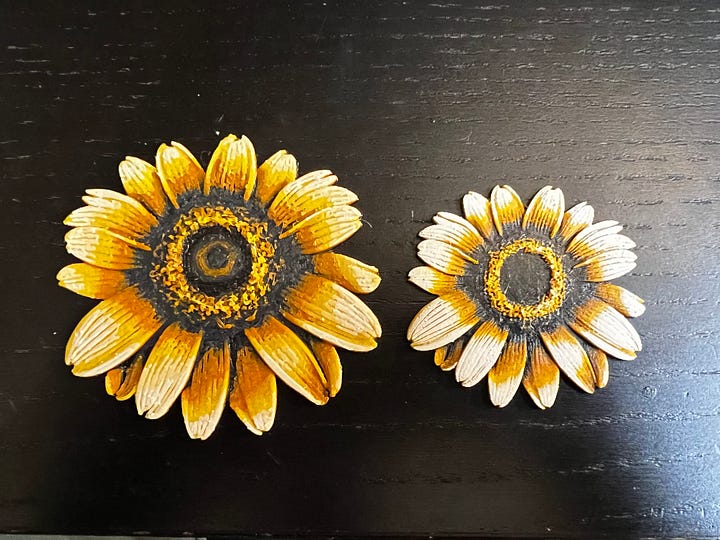

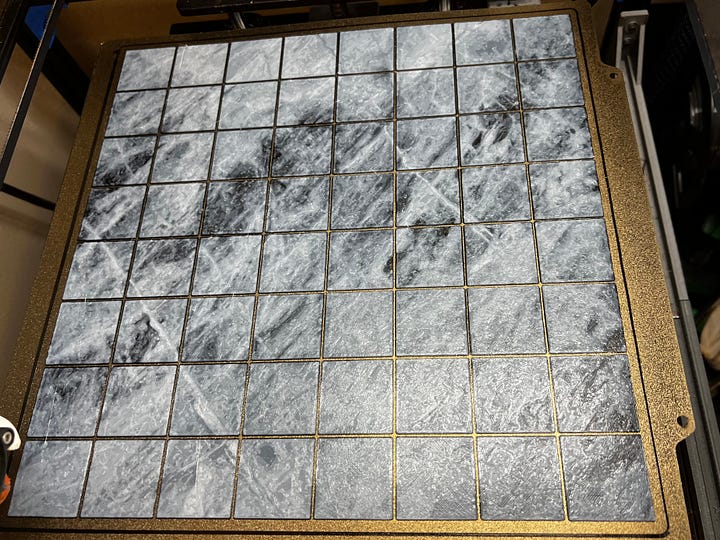
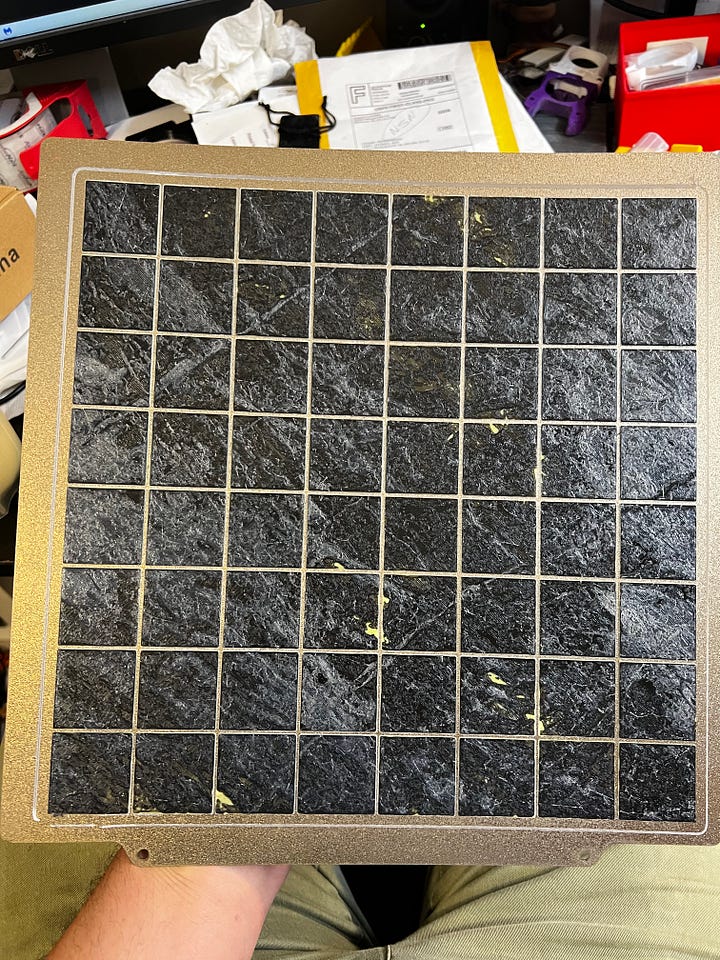
Some cutouts It’s local to your (Windows) machine. No worries about a website going down and files are generated in your directory so no download links later.
It does have some disadvantages as well
NOT ALL IMAGES WILL WORK/LOOK GOOD. This is #1. You will not be able to convert ANY image into a color lithophane in a way that even remotely represents the image as you expect. Sometimes you can compromise and still come up with cool images, but other times, it simply doesn’t work. Front-lit is a little more forgiving in terms of color space (and front-lit greyscale is very forgiving), but also more finicky because the distances are much smaller. But over time you become adept at seeing which images are likely to work and which aren’t.
There will be some step artifacts in your images. Often times you can fine tune the mesh to minimize them or turn them into features like shadow lines across a face. Some images will have barely any.
It doesn’t support all the different shapes other tools support - yet. In theory you could create any shape you want before import with simple image overlays, but isn’t in the tool.
Non-planar lithos are absolutely not supported.
Currently no in-app image cropping ability.
It will not do the more color-flexible CMYK method that Lithophane Maker supports. (But it also doesn’t require specifically formatted CMYK filaments)
Not all colors can blend at all - future features can address some of this, but not all of it.
It only works in Windows currently and requires you have an okay GPU (it will run on a crappy one, but it will be laggy). That being said, my 6-year-old midrange at-the-time of purchase desktop runs it just fine.
STL Generation is still fairly rudimentary and even with basic smoothing can be improved significantly to improve slicing time and reduce file size.
I’m a one man dev shop and it’s a new tool. There are bugs and annoyances and things I’m used to working around that a new user will not know. (I don’t think the other tools are multi-person dev shops, but they are more mature certainly).
I’m going to charge some money for mine. It’s not a lot, but it IS a disadvantage.
WAIT… How Much Money?
Starting price, a one time fee for unlimited personal use, will be $10. Despite my earlier post, there will be ZERO DRM or licensing. If you want to steal it, you can. I ask that you don’t, I’m not asking for a lot. Over time and with feature additions, it will ramp up to $25. This ramp will not be super short term. I want to get HueForge into people’s hands.
UPDATE: I have decided to use Substack for the Subscription provider for a few reasons, but they have a $5/month minimum. The yearly rate does not change, but the monthly goes to $5.
There is a $3 5/mo or $30/year subscription option that provides these benefits:
Access to features currently in progress. (All features will make their way to the $10 tier and bug fixes will always be effectively simultaneous. There might be a few times where a certain fix needs some testing and it might hit the sub group a day earlier).
More weight to your requests for new feature priority. (Post-release roadmap is coming soon)
Commercial Rights to sell STLs or Physical prints generated with HueForge.
Yes, you read that correctly, you can pay to be my alpha/beta testers. But also to guide development towards your personal use cases.
On launch, a $30 subscription order gets the software included (so you get a year of subscription for <$2/mo. After a period (probably not more than 90 days) you will have to pay separately. Your unlimited personal use license never expires even if you stop the subscription.
Want to read the meandering story of the creation of HueForge with more details on what it does? Keep reading. Not really interested? Could I encourage you to share this with someone who might be interested?
How Did HueForge Get Here?
You know what…this might be a post for another day. If you subscribe you won’t miss it. If you unsubscribe, you won’t be pestered by it. The choice is yours.



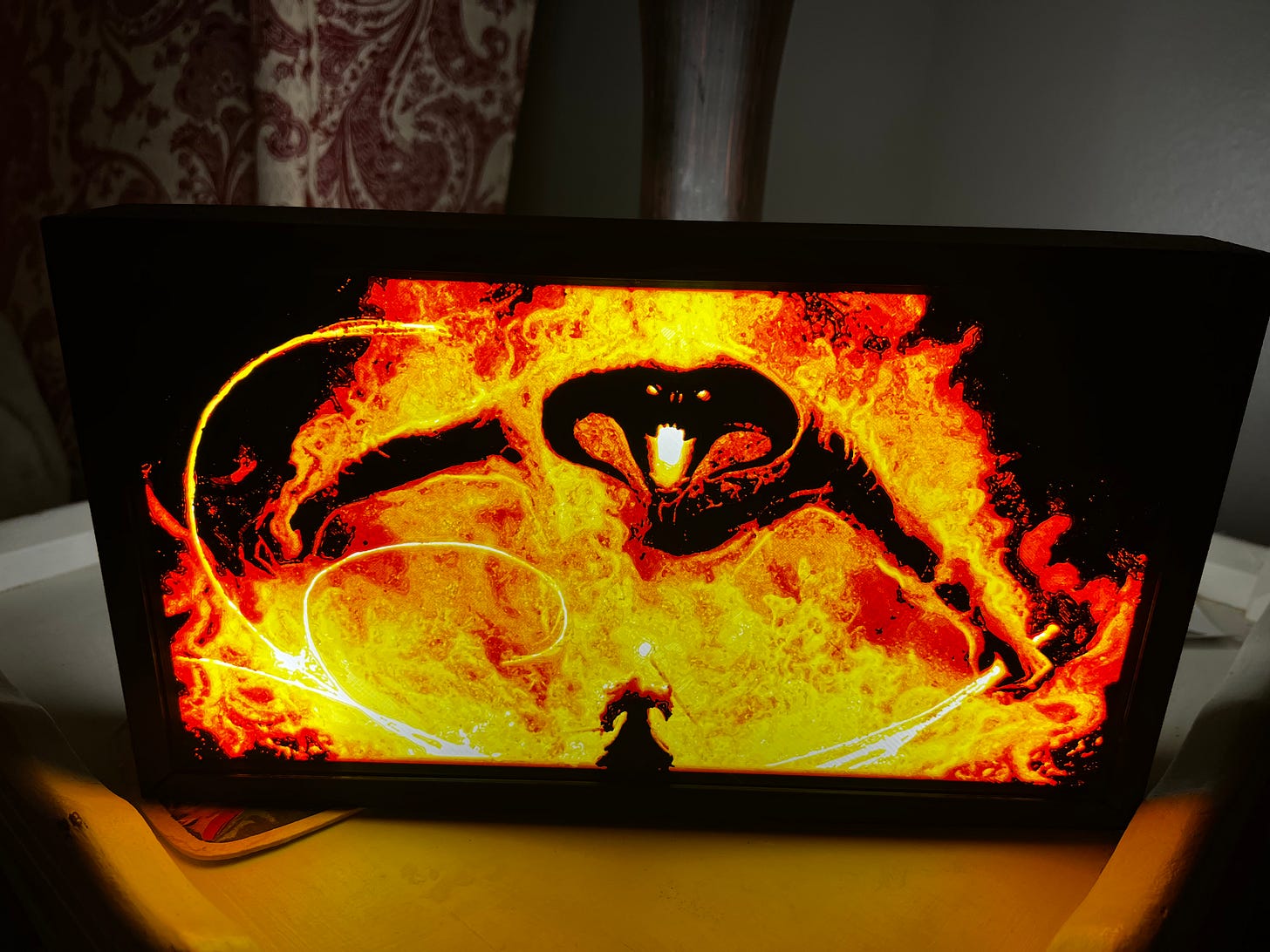
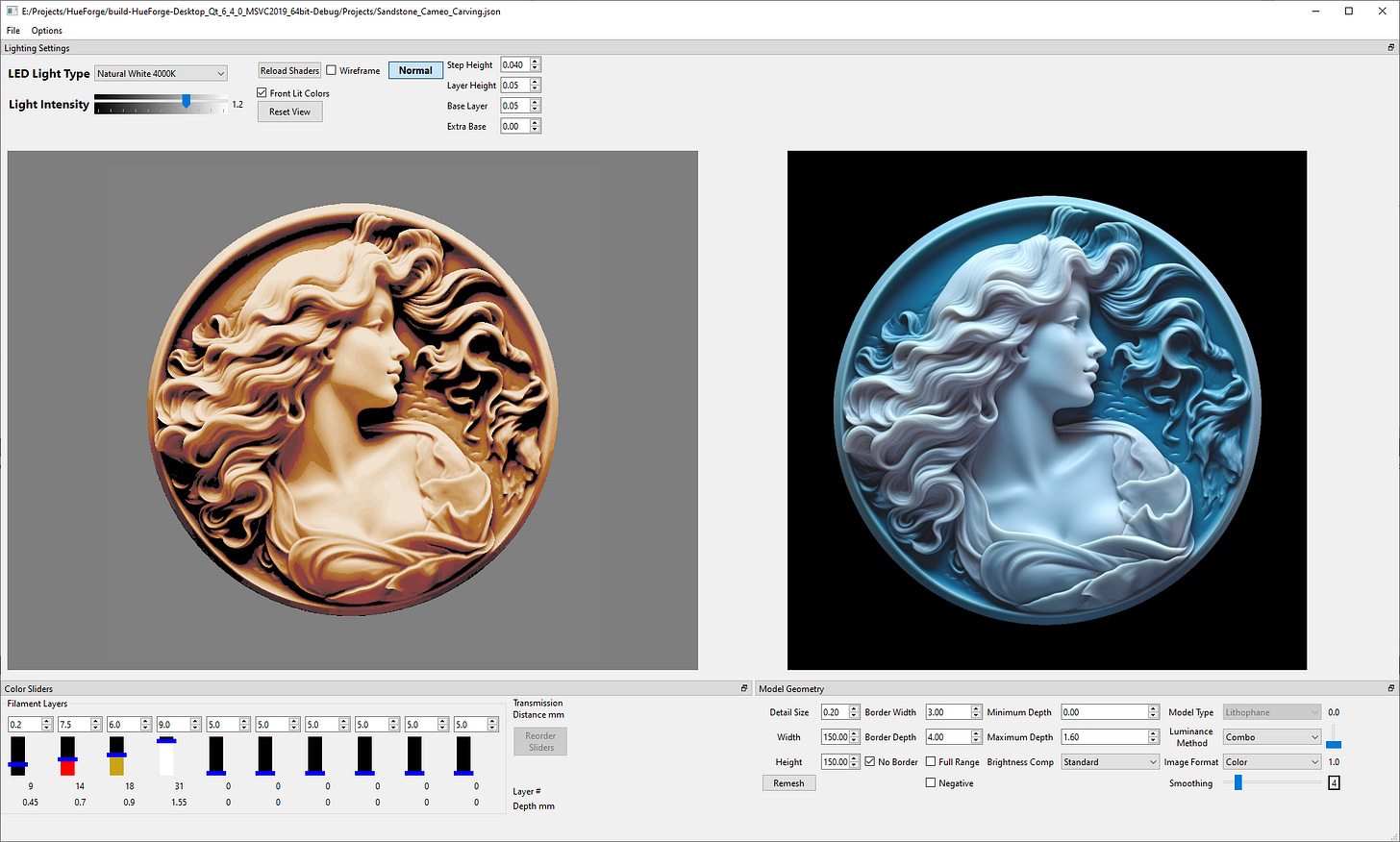
Super excited for this! Do you have an estimated time frame for release?
Hello Steven,
I was wondering when you might have a manual for Hueforge or at least a tutorial.
Thanks a lot,
Mario